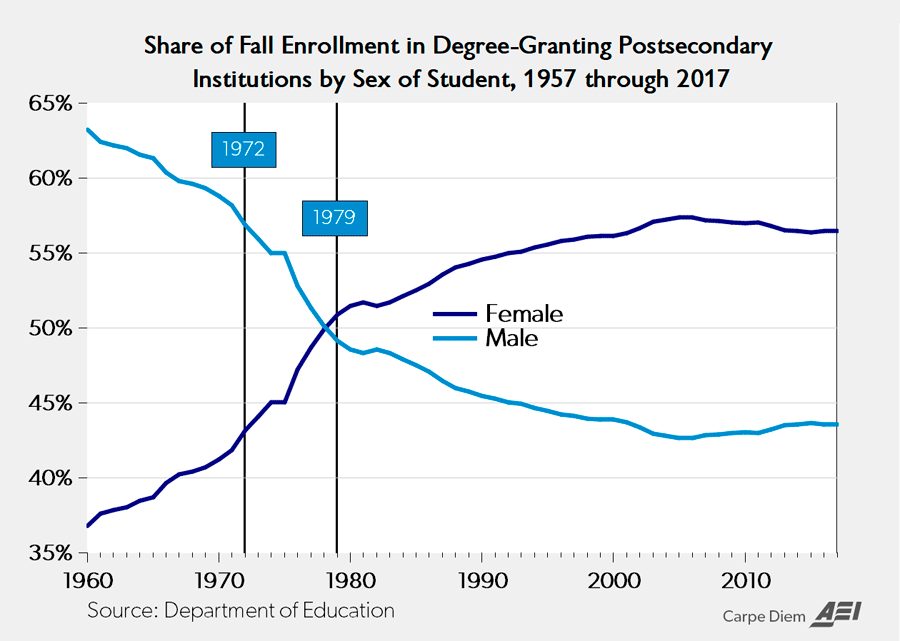
by Lil Tuttle
Instapundit’s Glenn Reynolds argues in USAToday that Title IX, the 1972 anti-sex-discrimination education law, “has been turned into a club with which to beat male students.”
Higher education has a gender problem: With a surplus of women and a shortage of male students, colleges are becoming more and more gender unbalanced. The more farsighted among university administrators are starting to worry that this will turn universities into a pink-collar ghetto, places that the public thinks of as finishing schools for girls rather than gateways to middle-class stability.
Part of the problem, of course, is that our K-12 system, staffed overwhelmingly by women whom research shows tend to favor girls, leaves a lot of boys demoralized and uninterested in further education. But another big part of the problem is that college has become an anti-male space.
At today’s universities, masculinity is almost never discussed except in negative terms, usually with the word “toxic” attached. When girls and women are discussed, the question is always about how to help them do better. When boys and men are mentioned, it’s almost always as some sort of a problem.
Exactly how great is the imbalance of the sexes in higher ed? AEI’s Mark Perry shows us:

Note that at the time Title IX passed, women were a minority in higher education, and represented just slightly more than 43% of college students enrolled in colleges and universities compared to a 57% male share of college students (see chart above).
Within just seven years from the passage of Title IX in 1972, female college enrollment surpassed men for the first time, and women officially became the majority gender in higher education that year, while men have been the underrepresented minority gender in higher education for the last 40 years (see chart).
By 2003, the female share of college enrollment surpassed 57% matching the 57% male share of students when Title IX was passed. In 2017, the female share of college students was just slightly below 57%, and women earned 60.8% of associate’s degrees, 57.3% of bachelor’s degrees, 59.4% of master’s degrees, and 53.3% of doctoral degrees.
Despite this new reality, argues Perry, colleges and universities continue business as usual, dispensing favoritism and special treatment to women.
But now that women (men) are the over-represented (under-represented) gender, and have been for more than a generation, higher education is still acting as if women still need attention, resources, scholarships, funding, fellowships, initiatives, clubs, camps, commissions, study spaces, conferences, and awards that aren’t available to men, with no concern at all about the under-represented minority.
Both writers say that’s changing. Writes Reynolds,
Now people are starting to fight back. Across the country, male students are suing, and filing Title IX complaints against universities for anti-male discrimination.
Cornell University has just been hit by a Title IX complaint filed with the Department of Education. The complaint notes that Cornell has immense resources dedicated to female students, ranging from a Women’s Health Center (but nothing for men), a Women’s Resource Center (but no Men’s Center) and a total of 390 scholarships available only to women, with no scholarships dedicated to men.
Reynolds notes that other cases against Yale University and Harvard University are under investigation, and a complaint against Tulane University was recently resolved.
Under pressure from the Department of Education, Tulane quietly entered into a settlement in which it promised to equalize the education opportunities for male students.
The fact is, colleges and universities have been openly discriminating against male students for decades now, with women receiving special treatment in terms of scholarships, housing and campus resources.
What’s really surprising is that it’s taken this long for people to start pushing back.

